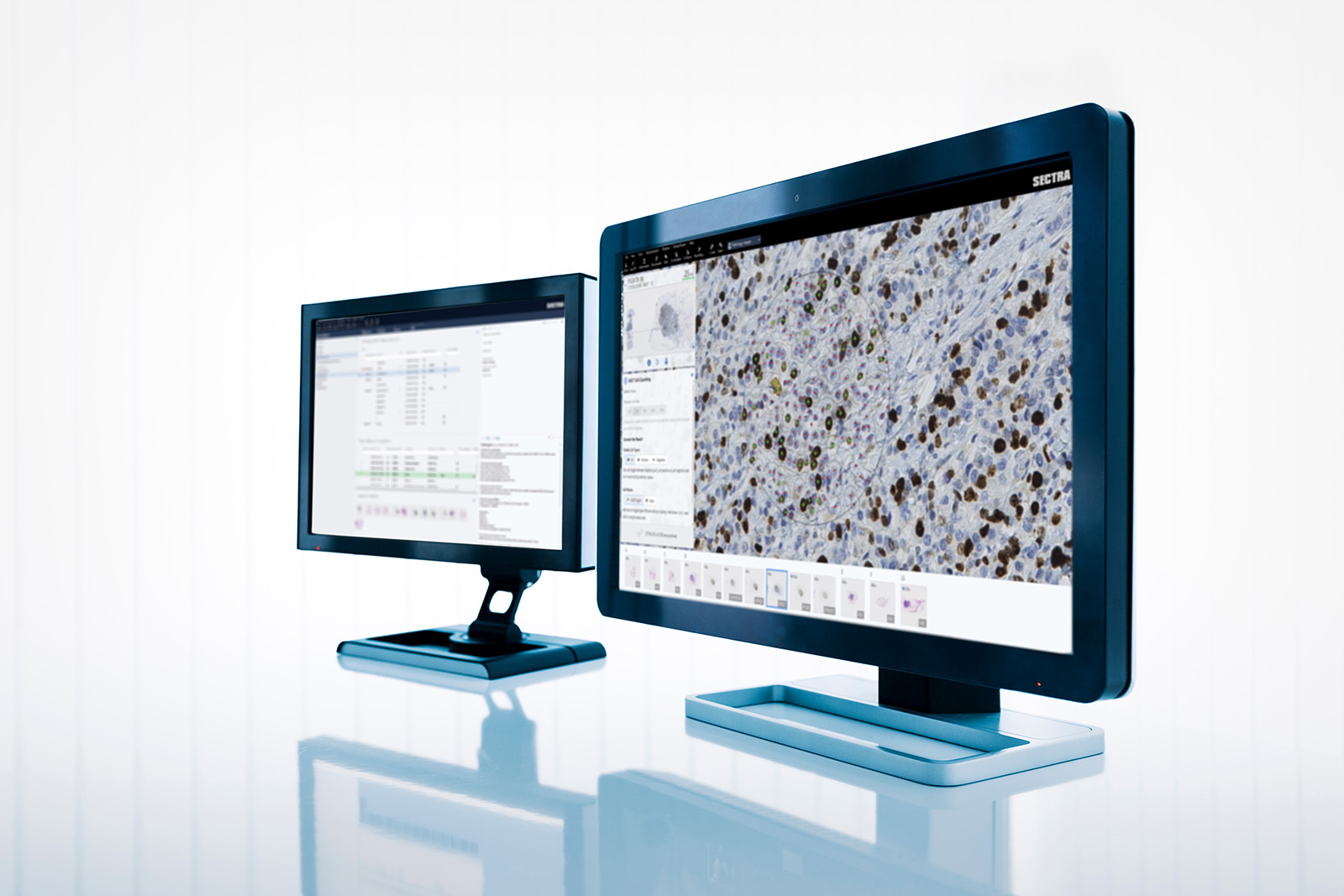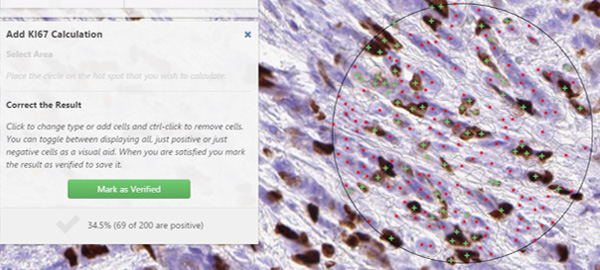With the granting of the first FDA approval for primary diagnosis, combined with several European labs performing most of their reviews digitally, the digitization of pathology has gained momentum and is now part of many labs’ plans.
Digital pathology brings such benefits as the ability to share images with colleagues within seconds and more efficient preparation and presenting at tumor boards. But probably the biggest long-term impact is the ability to apply Machine Learning (ML)-based image analysis (including deep learning). These tools will not only speed up the diagnosis itself, but also increase the precision, leading to a selection of the right treatment to patients. The benefits associated with higher precision will justify the business case for many labs to go digital.
But for ML applications to really impact pathologists’ daily work, they need to be implemented with workflow in mind. In this article, I provide a brief explanation of ML in general, its use for pathologists and advice on what to consider when implementing ML in your pathology operations.
What is machine learning?
In simple terms, ML solutions automatically create and learn a program from data. Since the data teaches the program, we do not need to define each possible step (for example, when this happens, then do that, etc.) or need to know how the program works.
Instead, the algorithm is supplied with a set of example images, for instance, in the case of pathology, a set of images of a specific tumor, or images with annotated features such as mitoses (dividing cells). The program learns from these images and when given a new image, it can classify the tumor type or identify mitosis based on the example set.
We all benefit from machine learning already today
ML is already part of most people’s lives. For example, as I type this text, I am listening to my “Discover weekly” playlist on Spotify, which is created by a ML program. The algorithm uses example songs from my personally created playlists as well as previous songs I have listened to. Based on these examples, it creates a list of songs that Spotify thinks I am likely to enjoy.
As we have all experienced at some point, these ML programs are far from perfect. They make mistakes. This is a crucial factor to take into consideration when applying ML in pathology. A plan must be in place to detect and handle the errors made by ML applications.

How can machine learning help the pathologist?
In the long term, ML will revolutionize cancer care. In the short term, we will probably soon see how ML will impact and facilitate the daily tasks of a pathologist. A few examples of how this may occur are provided below:
- In a similar way to how Google ranks results when you use its search engine, a digital pathology system could create a ranking of likely answers to a specific question. For example, it could determine the type of tissue or disease in a marked area.
- Just like Instagram suggests people who you might like to follow, the system could give recommended solutions to a specific problem. For example, it may ask “have you tried using Giemsa staining to look for helicobacters…?” (bad example, but you know what I mean).
- Clustering is also a powerful approach that is used when you shop online and is given examples on “other people also looked at…”. This function would provide the pathologist with insights into the findings of other colleagues in similar cases—like a virtual second opinion.
- Notifying the pathologist about uncommon features in an image could be compared to how Twitter or Facebook can identify “trending” topics and products and inform you about these.
The glorification of ML & its limitations
So will ML replace the pathologist? The answer is probably no. The new technology will probably only replace a small part of the work carried out by a pathologist in daily activities. But the parts that ML will replace will be crucial in a patient’s care and be in areas where computers have a significant advantage over humans, for example, when counting cells responding positively to a specific staining. Efficient and precise quantifications will become even more important as immunotherapy moves forward, with the pathologist playing a key role in determining which treatment that will be given to the patient.
It is also crucial to facilitate the use of ML technology so that the effort required is significantly below the perceived value of the benefits. One example of this is the voice recognition used by Google and Apple. Two or three years ago, this technology worked relatively well, but required some manual adjustments, which was frustrating and thus resulted in fewer users. Today, voice recognition is of such a standard that it saves time and therefore the number of users has increased significantly.
Last but not least is the legal aspect of using ML. As long as ML only provides suggestions and advice and does not provide a diagnosis and recommend a treatment, the regulatory hurdle is much lower. ML based on suggestions will enable error handling and facilitate roll out to healthcare, allowing patients and pathologists to benefit from the new technology faster. This philosophy is, for example, in line with the approach adopted by IBM’s Dr. Watson.
Key advice when implementing machine learning in pathology
Maintaining an efficient workflow is key when using ML applications in digital pathology. The algorithm should work “behind the scenes” and there is little patience for waiting for processing or changing application. Therefore, tight integration with the viewer is crucial to lower barriers to use and increase efficiency. The digital pathology solution chosen should feature good ML support for the most commonly performed tasks, and must have an open, standards-based interface so that you can implement the ML applications of your choice, regardless of vendor.
Another key aspect is to ensure that pathologists are still the ones making the decisions by giving them the ability to interact with the ML application. As I pointed out above, no algorithm is perfect, and giving the pathologist the power to change the result will create a feeling of authority and put the pathologist in the driver’s seat, instead of the opposite being the case. For this to become a reality, the visualization of the result is a crucial element in illustrating the basis for the algorithm’s decision. One example is the task of cell counting presented below, where each positive cell is market with a + sign. Pathologists can change these to a – sign if they deem these to be incorrect. The ML application should remember corrections to incentivize the pathologist to interact and refine the tool.
ML’s introduction to pathology—an enormous pie that will be eaten in small pieces
The opportunities offered by ML are endless and the technology is evolving rapidly. In the consumer industry, its use is increasing at a fast pace. In a similar manner, ML will facilitate the daily lives of pathologists.
However, due to the conservative nature of healthcare, and the serious implications of an error, ML algorithms for pathology should focus on the areas where the computer is superior to the human, where the threshold for use of the programs can be kept low, and where their use is easy to adopt from a legal perspective. The ML algorithm should put the pathologist in the driver’s seat.
###
This article was inspired by the best article I have read about machine learning: Machine Learning for Product Managers


